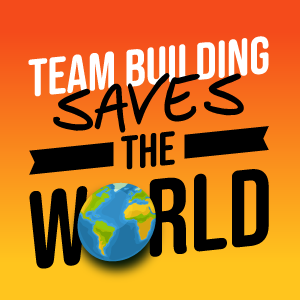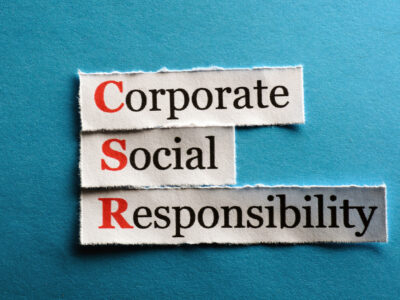Part 2 of a two part series on building team retreats. Read part 1 here.
Components of a Training Program
Creating training and development programs that meet the educational needs of your learners require that you create a program mix that meets the holistic needs of your staff. In my experience of providing work training and development programs I have found that mixing some of the following components into your program will create an effective, efficient, and empowering program.
Component #1: Soft Skills
These training sessions include learning components that will help develop the learner as a person. In my experience these sessions are best facilitated experientially. Use initiative tasks, dyadic encounters, dialogue groups, etc. to maximize the session’s learning potential. Some component sessions that you may choose to include are:
Trust and Team-building:
This session should be designed to get learners working together as intact work teams, develop positive risk taking behaviors, create a behavioral contract, create emotional & physical trust, enhance self- esteem, and have fun! Some initiative tasks that I find useful include Falls from Height, Low Ropes Courses, Trust Wave, and Willow in the Wind.
Issue Resolution:
This session is focused on developing the skills that staff require to effectively resolve issues (a.k.a. solve problems). The session should enable learners to design an issue resolution framework that is efficient and effective for their personal and collective needs. Learners should be required to work together to complete a task. Some initiative tasks that I find useful include Blindfold Maze, The Maze, and Traffic Jam.
Communication:
This session should be created for learners to delve into the concept of communication. Learners should focus on both verbal and non-verbal techniques of communication. This session should use metaphors to emphasize the learner’s ability to provide positive experiences to other members of the organization. In addition, the experience should conduct an internal and external audit of benefits and constraints to communication within your organization. Learners should discuss how to effectively communicate with co-workers, partners, children, community leaders, supervisors, etc. Some initiative tasks that I find useful here include Mine Field, Spiders Web, or Jahari’s Window.
Intrapersonal Development:
This session, when run effectively, will receive the highest of praises! Essentially you are giving people an opportunity to talk about themselves, which is usually their favorite topic. You can design this session to create empowered groups of people who are constantly looking within for growth, development, motivation, and understanding. This session creates unique bonds and develops your team as a cohesive, affective, effective, and efficient work unit. Here I like to use Dyadic Encounters, “I like you because…”, and Gauntlet.
Leadership:
These types of sessions help learners to practice skills and develop functional understanding in their own personal leadership abilities. This concept is one of the least understood in our society, but one of the most talked about. View this session as an opportunity to have your learners explore their own personal style of leadership. In addition, it allows identification of situations in which this leadership style may need to change. Some of the initiative tasks I enjoy using for these sessions include Nuclear Reactor, Confused Meuse, and Junk Yard Traverse.
Group Dynamics:
This session allows your learners to explore how an effective work team functions. Allow experiences that enable your learners to explore how the dynamics of your group flesh out. This type of session is a proactive tool that enables a group to explore each other’s personal differences in a safe and controlled atmosphere… which could save a lot of headaches in the future! Some of the sessions I utilize here include Stepping Stones, Monster Walk, and Prouty’s Landing.
Component #2: Hard Skills
These are the skills that we seem to spend the lion’s share of our time trying to develop in our learners. Generating hard skills in your staff enables them to meet the task responsibilities of their job. For example, for staff we may provide a session on effective planning and time management so that they can handle all their responsibilities. Some components of your hard skill training could include:
Personal Management & Goal Setting:
Providing a session that enables learners to explore personal, group and organizations goals will help place everyone on the same developmental page. Generation of missions, visions, objectives, operational plans, etc. will aid your learners in understanding how they must function to meet the needs of your organization. Providing a session on time management will also help your learners to better manage themselves for personal group and organization success.
Program Specific Needs:
These sessions will engage learners in some new and exciting ways to provide program specific skills within their jobs. These sessions will need to be focused towards the specific needs of the individual job roles of the staff in your organization. For example, a sales person could experience practical hands-on program components including the cold call, keeping a client database, and closing the deal. Your president may gain functional understanding in such areas as running a meeting, managing volunteers, and conducting surveys.
Stress Management:
As our society changes and develops we see a greater need to show our staff how to prevent burnout. A session like this provides learners with the opportunity to learn techniques in concepts like Phasic Relaxation, Creative Visualization, Breathing Techniques, Healthy Eating, Active Living, and much more. When your learners adopt these skills they will be able to perform their jobs more easily and miss less days of work due to illness.
Inclusion/Cultural Sensitivity:
In North America’s melting pot we have the benefit of living with many people from different cultures and with unique abilities. In the business community in particular, we have the opportunity to provide dynamic experiences for the entire cross section! How our staff leaders function with any person is a huge consideration for coaches/managers. Some of the things that you may want to include in sessions like this include: developing a well rounded program mix; designing activities for people with varying needs; choosing your words carefully; functional understanding of people with special needs (i.e. those with ADD, quadriplegics, etc.); integrating people with different needs; and communicating through cultural understanding.
Policies, Procedures and Plans:
Help your staff to understand what the organization is all about. In other words, spend some training time exploring the organizations history, resources, organizational structure, insurances, discipline policies, staff expectations, etc. In addition, share with your staff what the organizations future plans are (i.e. Strategic Plans, HR Strategies, Development Planning, etc.). This helps the learner figure out how they fit into creating a stronger organization.
Conclusion
Now, if you haven’t shared this article’s contents with a colleague, now is as good a time as any. If you haven’t decided which aspect of this article you are going to apply to your next training and development program, now is definitely the right time.
Great training and development programs follow the 3:1 rule. This rule states that you need to spend 3 units of time planning, for every one unit of time used implementing. You are creating lifelong learning through skill development in the learners you touch. It is worth the extra effort because, like I learned at McDonald’s, every staff training program has the ability to create empowered, effective, and efficient human resources. Period.
Resources
Butler, Steve & Karl Rohnke. Quicksilver- Adventure Games, Initiative Problems, Trust Activities and a Guide to Effective Leadership. Dubuque: Kendall/Hunt Publishing, 1995.
Covey, Stephen. The 7 Habits of Highly Effective People- Powerful Lessons in Personal Change. New York: Fireside, 1989.
Gawain, Shakti. Creative Visualization- Use the Power of your Imagination to Create What you want in Your Life. Novato: New World Library, 1995.
Kleinn, Edie. It’s My Job: Job Descriptions for Over 30 Camp Jobs. Martinsville:American Camping Association, 1992.
Priest, Simon & Michael Gass. Effective Leadership in Adventure Programming. Champaign: Human Kinetics, 1997.
Rohnke, Karl. Silver Bullets- A Guide to Initiative Problems, Adventure Games, and Trust Activities








